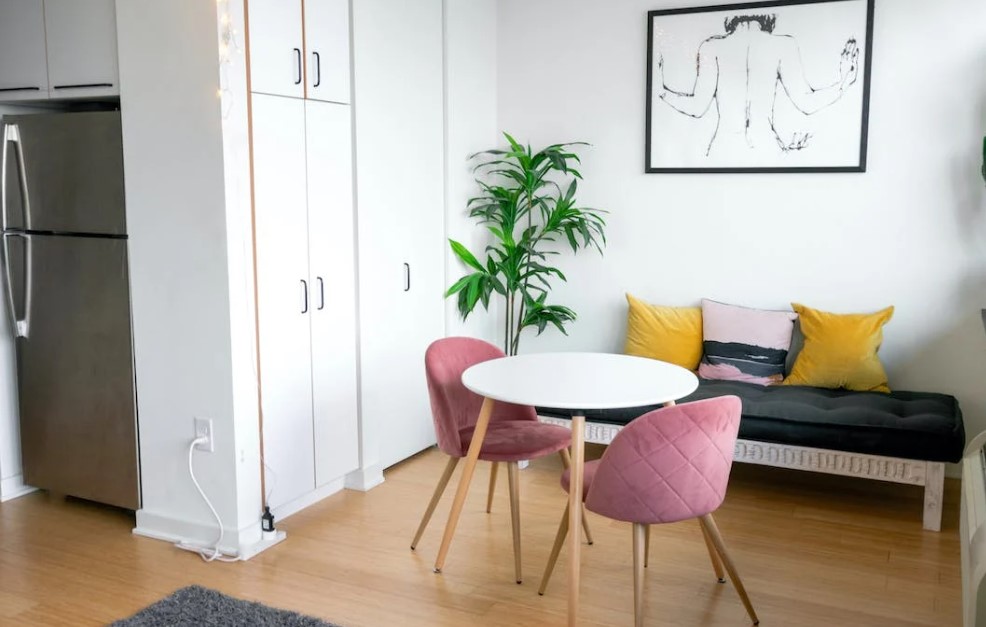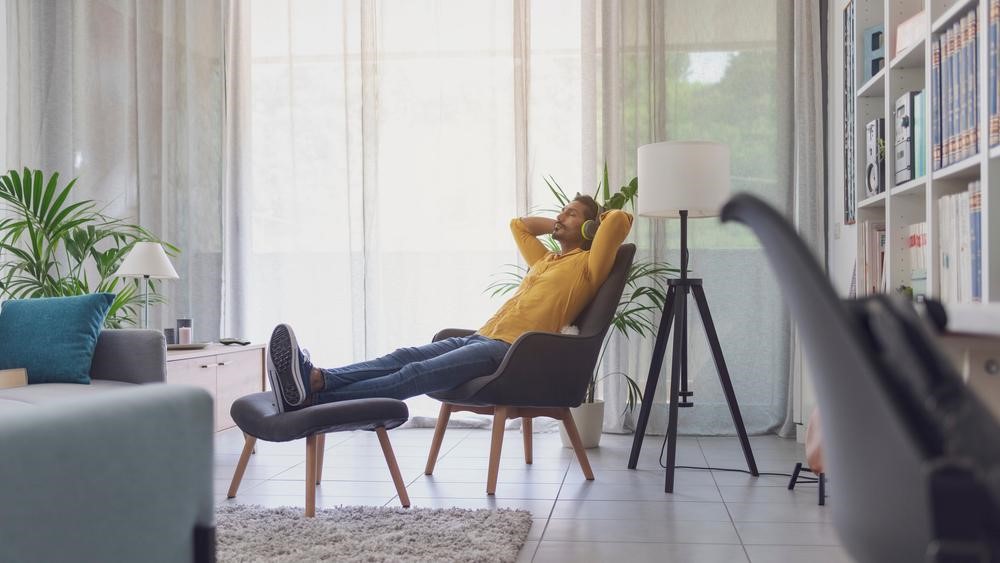Your home should be a place where you relax and recharge after the day. It should make you feel calm and peaceful. Unfortunately, the home environment adds to most people’s stress and anxiety.
However, it doesn’t have to be that way. With a few simple changes, you can create a serene and comfortable home environment that you look forward to going to.
Below are tips for creating a tranquil home atmosphere.
Declutter Your Home
Decluttering your living space is one of the most important steps toward creating a peaceful home environment. Numerous studies show that a cluttered and disorganized home can be a source of stress and anxiety. It may cause you to feel overwhelmed, which makes it difficult to relax.
A clutter-free space gives you a sense of control over your surroundings and makes it easy to maintain a clean and tidy home. A peaceful environment also improves your sleep quality and overall well-being.
Decluttering involves eliminating unnecessary items from your living space to make it more organized and tidy. It can seem like a daunting task, especially if you have a lot of unwanted items. However, you can make the decluttering process more manageable by breaking it down into smaller tasks.
Work on one room at a time. You do not have to do everything in one day. Rather, schedule different decluttering tasks within a timeline that works for you. For example, you can schedule one hour each day or 3 hours each weekend.
Sort your belongings into various categories: keep, donate, sell, or discard. Then, develop a system to organize the items in the “keep” category. Arrange the items in a way that is easy to retrieve them. Declutter regularly to keep your home neat and avoid unnecessary items from accumulating.
Use Lighting to Create a Calming Ambience
Lighting plays a significant role in the overall ambiance of a home. For example, home lighting, such as soft white or yellow bulbs, creates a cozy environment. Soft accent lighting, table lamps, and wall sconces also help to create a cozy and intimate atmosphere. In addition, they add dimension and depth to a space.
You may also create layers of lighting by combining different types of lighting to create a more balanced and comfortable ambiance. Install dimmer switches, then enable you to adjust the brightness in your living space to suit your mood. Ultimately, avoid harsh, bright lights as they may cause strain on your eyes, making it difficult to relax.
It’s also paramount to ensure adequate natural light. Natural light has a calming effect and helps to regulate your circadian rhythm. It also creates a bright and welcoming atmosphere.
There are various ways to allow natural lighting into your home, including:
- Removing obstructions that may block the natural light, like heavy blinds and curtains, trees or bushes near windows
- Cleaning your windows regularly to remove accumulated dirt or grime that may prevent natural light from passing through
- Placing mirrors strategically to reflect and distribute natural light throughout your living space
- Installing skylights
Incorporate Calming Sounds in Your Home
Calming sounds can be a beneficial addition to your home, promoting relaxation and stress relief. There are different types of calming sounds that you can incorporate in your home, including white noise, nature sounds, yoga music, meditation music, classical music, etc. You may use a white noise machine, mobile app, streaming device, Bluetooth speaker, etc.
Experiment with the different options to find out what works best for you. For instance, you can play meditation music in the morning when you wake up or white noise in the evening and throughout the night to make you fall asleep faster and more deeply.
You could also run the ceiling fan on a low setting to serve as background noise or stream calming music on your television. Another way to incorporate peaceful music in your home is by installing indoor fountains, water chimes, or singing bowls.
Infuse the Air With Calming Scents
Scents can have a powerful effect on your emotions. As such, they can be useful in creating a peaceful and relaxing home atmosphere. Various studies show that certain scents, like lavender, bergamot, and chamomile, have stress-reducing effects and promote relaxation and wellness.
Others, such as citrus and pine, create a warm and inviting atmosphere in your home. Yet others, such as lemon and peppermint, have mood-boosting properties that help to create a positive and uplifting environment. Furthermore, scents can help to eliminate unpleasant odors for a more conducive living space.
You can infuse scents into your home in various ways, including candles, essential oils, diffusers, hand soaps, potted flowers, herbs, and grass. Experiment with the different options and scents to identify what works for you and creates a peaceful home environment.
Use a Neutral Color Pallet for Your Home Interior

Neutral colors for interior design are classic and timeless and help create a calming atmosphere. They reduce visual clutter and create a serene ambiance. They are also minimalist and offer décor versatility as they can be paired with most other colors.
Some good neutral color options for creating a peaceful home include soft whites, cool blues and greens, pale gray, ivory, lavender, lilac, and soft pink. When deciding which neutral color to use, consider your preference, lighting, and other décor elements in the house. Also, study basic feng shui.
Incorporate Live Indoor Plants
Live indoor plants contribute to a peaceful and calming home environment in different ways. First, they purify the air creating a cleaner and healthier indoor environment. Plants such as carbon monoxide, formaldehyde, and benzene remove toxic elements from the air.
Secondly, they increase oxygen levels in the room through photosynthesis and respiration. As a result, they create an energizing and refreshing environment, which promotes relaxation.
Thirdly, live plants add a natural element to your home and enhance overall aesthetics. They can also help to create a quieter environment by absorbing sound. Furthermore, keeping and caring for plants can be a rewarding experience with numerous mental, emotional, and physical health benefits.
If you are a beginner at keeping indoor plants, start with easy-to-care-for options such as snake plants, pothos, and spider plants. Research how to care for the specific type and the suitable lighting, temperature, moisture, and humidity conditions. You may consider ceiling plants or potted plants. Or, mix and match different plant colors and textures for an eye-catching display.
Accessorize With Soft Textures
Doesn’t it feel nice to touch soft-textured fabrics?
Incorporating soft textures in each room goes a long way in creating a warm and nurturing environment. It adds coziness such that you just want to sit back and relax. Soft textures such as wool, cotton, and linen add warmth.
You can also use soft textures to soften hard surfaces and your home’s overall look and feel. For example, cushions, throws, and rugs can cover hard surfaces such as metallic or wooden furniture, stone walls, and wooden floors.
The soft and hard surfaces also complement each other to create a balanced look and feel. In addition, soft textures absorb sound, creating a quieter environment. As such, drapes, curtains, and upholstery can help to keep noise out.
The various ways to use soft textures to create a relaxing home environment include:
- Adding throw pillows and blankets on your chairs and sofas
- Spreading a throw blanket at the foot of the bed and styling with extra pillows
- Layering your dining table with tablecloths, runners, placement mats, and napkins to make it cozier
- Spreading soft linen on your bed
- Incorporating upholstered furniture in your interior design like upholstered outmans, chairs, sofas, beds, and armchairs
- Layering different textures like plush cushions, soft rugs, and cozy throw pillows
Tend to the Outdoors

Don’t just focus on the indoors and forget the outdoors. No matter how small or big your outdoor space is, it affects the feel and look of your house. Therefore, keep the outdoor space clean.
Clean it regularly to remove accumulated dirt and debris that may not only be unsightly but also contain allergens and toxins that can enter your home. If possible, add plants and set up a cozy sitting area. Also, use soft and warm outdoor lighting to create a relaxing ambiance.
Conclusion
You may not control what happens in the world and how each day turns out, but creating a tranquil home can significantly improve the quality of your life. Therefore, take time to carve out an inviting living space that brings you joy and serves as a safe haven for you to retreat, rejuvenate, and relax.
There are unlimited ways to create a peaceful home. As discussed above, they include lighting to create a calming ambiance, infusing your home with soothing scents, allowing adequate natural lighting, and incorporating calming sounds.
However, the most important is decluttering and organizing your home. Therefore, start with decluttering and implement additional ways to make your home more peaceful and inviting.


